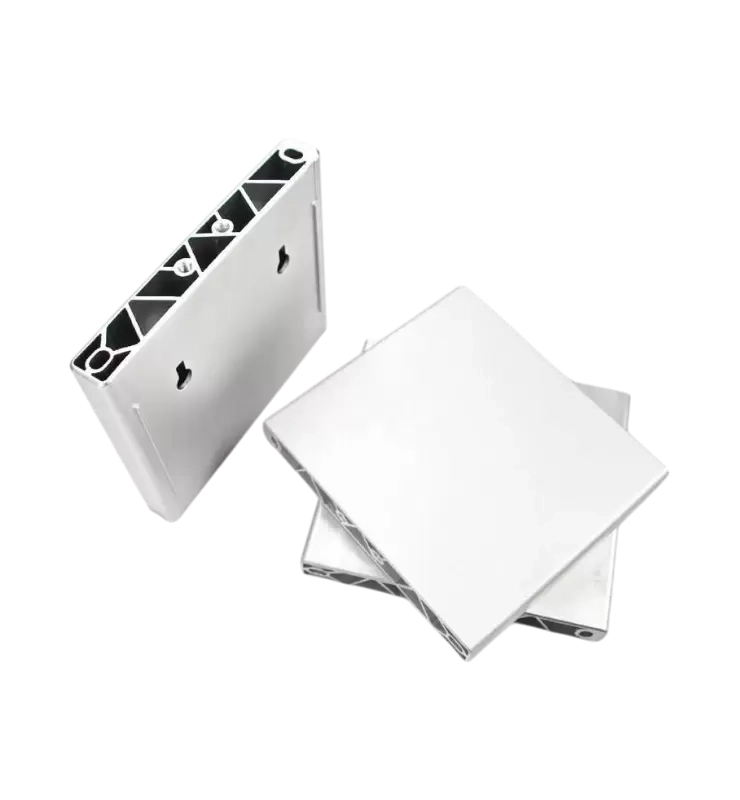- This topic is empty.
-
AuthorPosts
-
2025-05-31 at 11:53 pm #25155
In today's competitive product development landscape, rapid iteration, cost-effective design validation, and materials performance are essential to success. Among the many tools and processes available to engineers and manufacturers, aluminum extrusion prototyping has emerged as a critical technique that bridges the gap between concept and production. Known for its versatility, structural integrity, and design freedom, aluminum extrusion provides an efficient method for fabricating prototype components with properties nearly identical to final production parts. This article Full-Linking explores the key technical benefits ofaluminum extrusion prototyping. Whether for aerospace structures, automotive parts, or electronic enclosures, aluminum extrusion prototyping offers unmatched speed, precision, and value in transforming ideas into functional physical components.
What is Aluminum Extrusion Prototyping?

Aluminum extrusion prototyping is a manufacturing process where aluminum billets are heated and forced through a die to create profiles with uniform cross-sections. In the context of prototyping, this process is utilized to create sample parts for testing, validation, and design refinement before committing to full-scale production.
Unlike CNC machining or 3D printing, which can be more costly or less material-efficient for linear profile geometries, aluminum extrusion is ideal for parts that benefit from long, continuous shapes—such as rails, heatsinks, frames, channels, and tubes. Prototyping using aluminum extrusion not only provides a fast turnaround time for real-world evaluation but also uses the same production-grade material and form factor, enabling accurate mechanical, thermal, and structural testing.
Engineers can quickly validate fit, form, and function, experiment with design variations, and even conduct assembly integration tests with these prototypes. This makes aluminum extrusion prototyping a cornerstone in the iterative design process, especially for industries where weight, strength, and precision are paramount.
Key Technical Advantages of Aluminum Extrusion Prototyping
The widespread adoption of aluminum extrusion prototyping across engineering disciplines is driven by a unique combination of technical benefits that align well with modern manufacturing demands.
Rapid Design Iteration
Time is a critical factor in product development. With aluminum extrusion prototyping, engineers can go from CAD design to physical part in a matter of days or weeks, depending on the complexity of the profile and the availability of tooling. Custom dies can be produced relatively quickly using precision machining or wire EDM (Electrical Discharge Machining), and once available, extrusion runs can begin immediately. This rapid turnaround enables faster feedback loops between design, testing, and improvement—allowing teams to refine geometries, tolerances, and joining strategies efficiently.
Cost-Efficient Tooling
Compared to injection molding or die casting, extrusion dies are relatively simple and inexpensive. In prototyping scenarios where multiple design revisions may be required, the lower cost of tooling provides a significant advantage. Simple profile changes may only require minor die modifications instead of complete tool rebuilds. For low-volume functional prototypes or early market testing, aluminum extrusion prototyping offers an economically viable pathway to manufacturing production-representative parts without heavy capital investment.
Material Performance and Consistency
Aluminum is prized for its high strength-to-weight ratio, corrosion resistance, conductivity, and thermal performance. Because extrusion prototypes use the same alloys (such as 6061, 6063, or 7075) that are used in final production, the prototypes exhibit authentic mechanical properties—making them suitable for load-bearing applications, thermal analysis, and environmental testing. Unlike 3D printed polymers or sintered metal parts, which may differ significantly from their production counterparts in terms of density or isotropy, extruded aluminum prototypes allow for realistic evaluation under real-world conditions.
Customizable Cross-Sections
Extrusion technology excels at producing complex, continuous cross-sections that would be difficult or inefficient to machine. This includes internal cavities, fins, snap-fits, hollow structures, and multi-chamber profiles. For prototyping enclosures, structural supports, rails, or mounting assemblies, extrusion offers unmatched flexibility in profile design. Designers can incorporate features such as cable management channels, self-aligning joints, or heat-dissipating fins directly into the extruded profile, reducing the need for secondary processing and enhancing product integration.
Aluminum extrusion prototyping represents a powerful, reliable, and cost-effective method for translating design concepts into high-quality, production-representative parts. By offering unmatched speed, design flexibility, and material fidelity, it empowers engineers to iterate quickly, validate thoroughly, and innovate confidently. From early-stage design validation to final product development, the process provides a strategic advantage for industries that demand precision, performance, and agility. As the demand for rapid, lightweight, and scalable solutions continues to grow, aluminum extrusion prototyping will remain an indispensable tool in the modern engineer's toolkit—bringing form, function, and manufacturability into alignment with tomorrow's design goals.
https://www.fulllinking.com/aluminum-extrusion-service.html
http://www.fulllinking.com
Full-Linking -
AuthorPosts
- You must be logged in to reply to this topic.